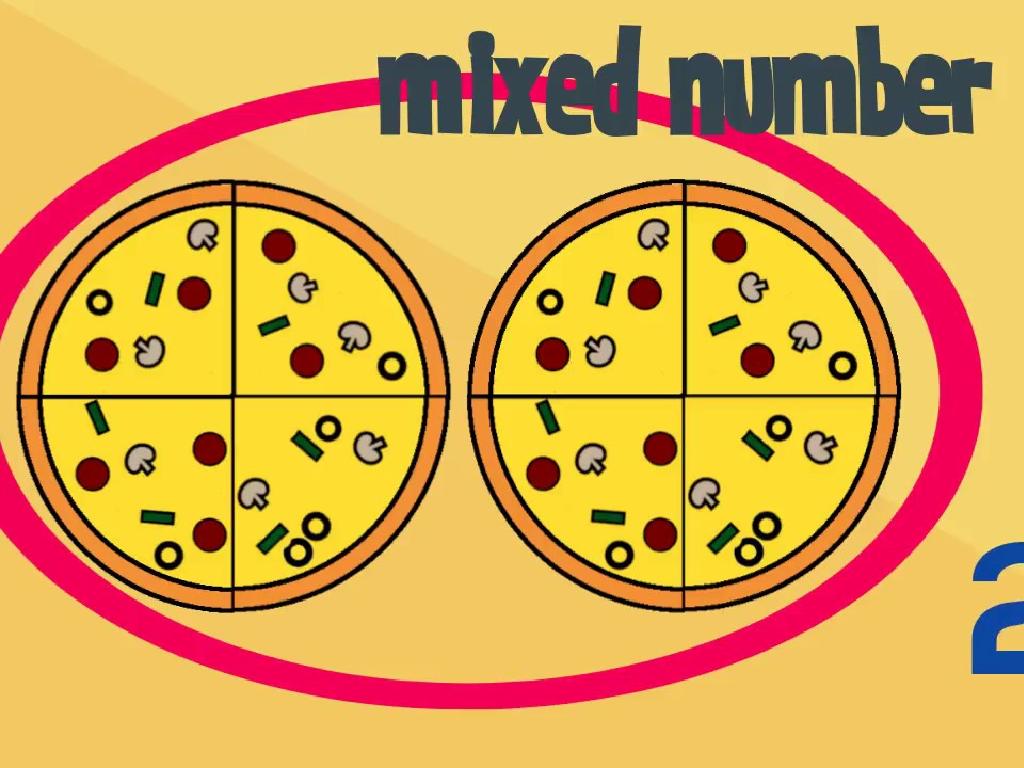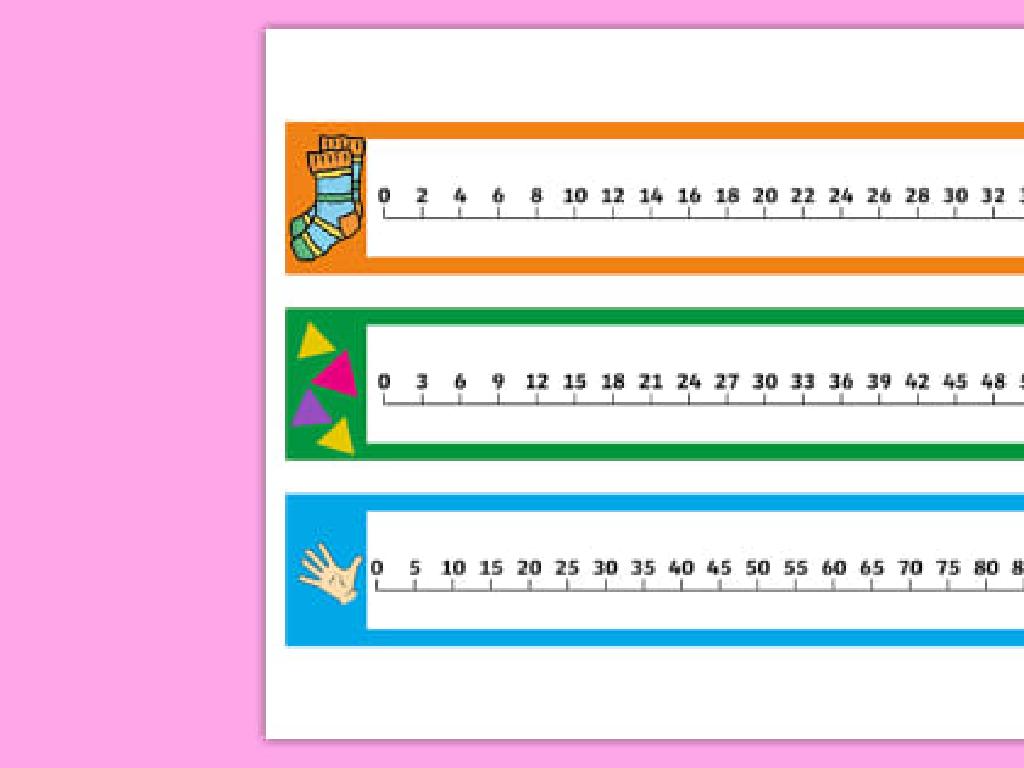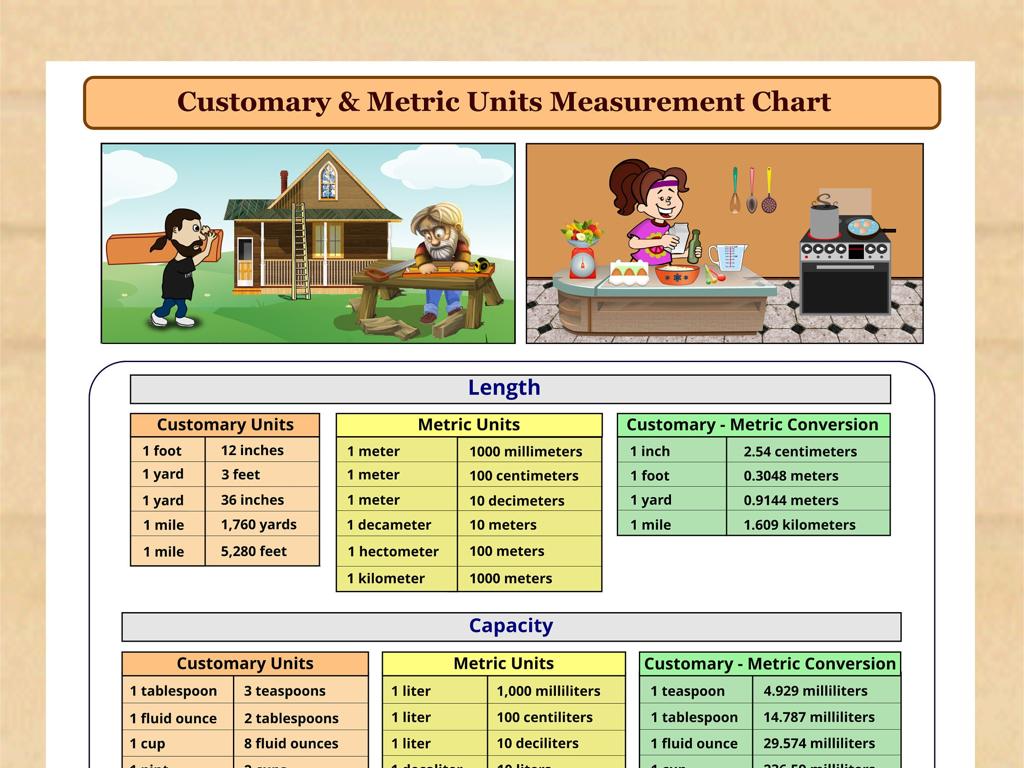Square Roots Of Perfect Squares
Subject: Math
Grade: Eighth grade
Topic: Square Roots And Cube Roots
Please LOG IN to download the presentation. Access is available to registered users only.
View More Content
Introduction to Square Roots
– Understanding square roots
– The square root of a number is a value that, when multiplied by itself, gives the number.
– Defining a perfect square
– A perfect square is an integer that is the square of an integer, e.g., 1, 4, 9, 16.
– Listing examples of perfect squares
– Common perfect squares: 1, 4, 9, 16, 25, 36, 49, 64, 81, 100.
– Practical applications
– Perfect squares in geometry: area of squares, Pythagorean theorem applications.
|
This slide introduces the concept of square roots, focusing on perfect squares. Begin by explaining that the square root of a number answers the question: ‘What number can I multiply by itself to get this number?’ Emphasize that perfect squares are the squares of whole numbers. Provide examples of perfect squares and ask students to identify the pattern. Discuss the relevance of perfect squares in real-world scenarios, such as calculating areas in geometry and in the Pythagorean theorem. Encourage students to think of other areas where square roots are applicable.
Properties of Square Roots
– Definition of a square root
– A number which multiplies by itself to form the original number, e.g., 9 = 3 because 3 x 3 = 9.
– Positive and negative roots
– For any positive number n, n is positive and – n is negative.
– Perfect squares have integer roots
– Perfect squares like 16 have whole number roots, 16 = 4.
– Square roots in equations
|
This slide introduces the fundamental properties of square roots, which are essential for understanding how to work with them in mathematical equations. Emphasize that the square root function essentially ‘undoes’ the squaring of a number. Highlight that while every positive number has two square roots (one positive and one negative), we typically refer to the positive root. Use examples of perfect squares to show that their roots are always integers, which simplifies calculations. Encourage students to think of square roots as the opposite operation of squaring a number and to practice finding square roots of perfect squares to reinforce the concept.
Identifying Perfect Squares
– Define perfect squares
– Numbers that are squares of integers, e.g., 1, 4, 9, 16
– Memorize squares from 1² to 20²
– Knowing these by heart aids in quick recognition
– Verify perfect squares by multiplication
– Multiply integers by themselves to check if a number is a perfect square
– Practice with examples
– Try finding if 49 or 64 are perfect squares
|
This slide introduces the concept of perfect squares, which are essential for understanding square roots. Emphasize the importance of memorizing the squares of numbers 1 through 20 to help students quickly identify perfect squares. Provide strategies for verification, such as multiplication, to confirm if a number is a perfect square. Encourage students to practice with examples and to test their knowledge by identifying perfect squares in class. This foundational knowledge will be crucial for their understanding of square roots and will aid in solving more complex math problems.
Calculating Square Roots of Perfect Squares
– Finding square roots of perfect squares
– Square root undoes squaring: x^2 = x, for x being a perfect square
– Simplifying roots with prime factorization
– Break down the number into prime factors and pair them to simplify
– Practice with examples: 64, 121, 225
– 64=8, 121=11, 225=15. Use prime factorization to see why
|
This slide introduces the concept of calculating square roots, specifically focusing on perfect squares. Start by explaining that the square root function is the inverse of squaring a number. Emphasize that this operation only results in a whole number when applied to perfect squares. Teach the method of prime factorization to simplify square roots, which involves breaking the number down into its prime factors and pairing them up to find the square root. Provide practice problems with the square roots of 64, 121, and 225, and guide students through the prime factorization process for each. Encourage students to work through these examples and verify the results by squaring the roots to get the original number.
Square Roots in Real Life
– Square roots in architecture
– Architects use square roots to calculate areas and dimensions.
– Square roots in technology
– Tech relies on square roots for algorithms, like image processing.
– Square roots in engineering
– Engineers use them to solve problems in structures and materials.
– Significance in mathematics
– Understanding square roots is fundamental for advanced math concepts.
|
This slide aims to show students the practical applications of square roots beyond the classroom. In architecture, square roots help in designing buildings with precise dimensions. In technology, they are used in various algorithms, particularly in computer graphics and image processing. Engineering applications include material stress analysis and structural design. Emphasize the importance of square roots in mathematics as they are the building blocks for more complex concepts like quadratic equations, which students will encounter in higher-level math. Encourage students to think of other areas where square roots might be used and to appreciate the role of mathematics in real-world applications.
Class Activity: Square Root Bingo
– Receive Bingo card with perfect squares
– Listen for square roots called out
– Mark corresponding perfect squares
– Yell ‘Bingo!’ to win when you complete a row
|
This interactive class activity is designed to help students practice identifying the square roots of perfect squares in a fun and engaging way. Each student will receive a Bingo card filled with perfect squares instead of numbers. As the teacher, you will call out square roots, and students will have to quickly calculate and find the corresponding perfect square on their Bingo card. For example, if you call out ‘square root of 36′, students should look for ’36’ on their card. The first student to mark off a complete row on their Bingo card and yell ‘Bingo!’ will be declared the winner and receive a small prize. This activity not only reinforces the concept of square roots but also encourages quick mental calculation. Prepare multiple rounds with different Bingo cards to give each student a chance to win.





